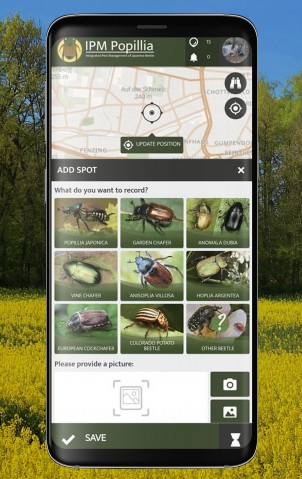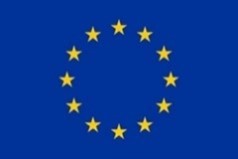Citizen Science Observations made easier
The beauty of the IPM Popillia App is that it's been designed to grow together with the project's requirements and needs. The SPOTTERON platform provides an excellent framework in which such a project can expand, leading to the current extension in the latest App update, which now includes seven beetle species users can observe alongside the primary beetle of interest - the Popillia japonica.
All of these look a bit similar to the Popillia j., and some are also considered agricultural pests, but they are indeed different species already existing in Europe. Because these beetles may be a little bit difficult for novices in Citizen Science to distinguish from the voracious Popillia japonica, the buttons were designed with photos to make it easier for users to tell them apart.
Furthermore, the possibility of observing more than just one beetle species in the App opens up the concept. It is more inviting for a wider group of Citizen Scientists to participate in the project. As with all Citizen Science projects, high user participation is vital for collecting valuable data, and the more people document their beetle sightings in the App, the more we can find out about the whereabouts of Popillia japonica.
New Languages for Citizen Scienctists From Across Europe
Further improvements in this update are the App's Add Spot Dialogue in three new languages: Italian, French, and Portuguese, making it easier for native speakers to participate and be included in the project.
Future updates will include even more different beetle species and info panels to further ease the beetles' correct identifications. Besides improving the App as an essential tool for the project, it provides learning opportunities for interested Citizen Scientists.


